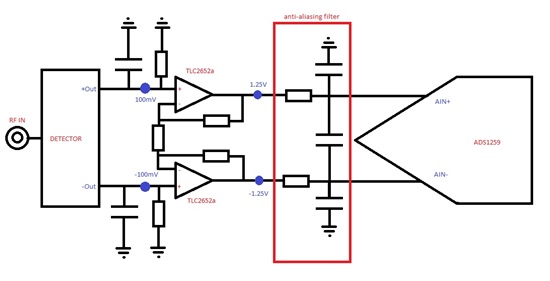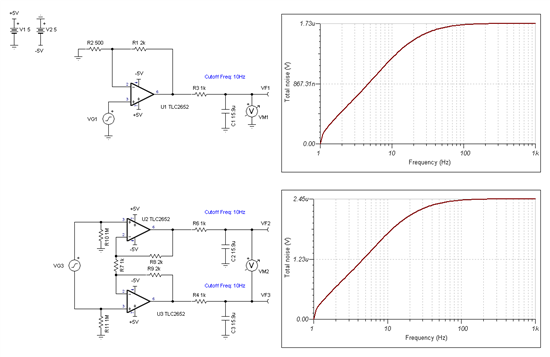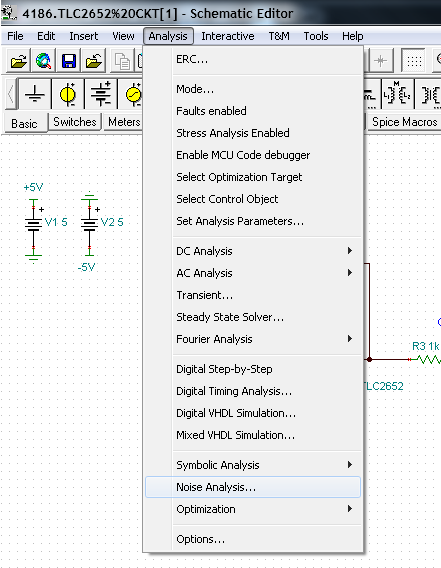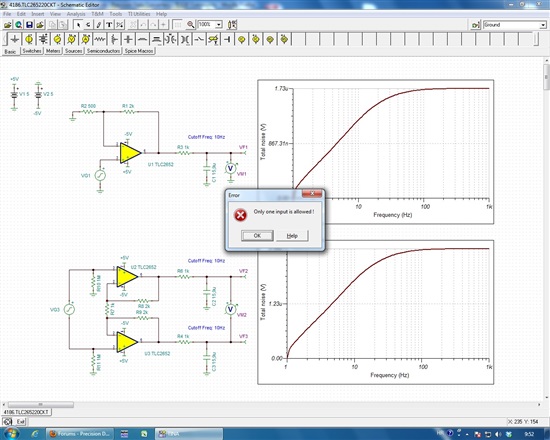Hello,
I attached a block diagram of a system I'm trying to build and I have few questions about ADS1259 .
1) What is the max input voltage on ADS1259 analog input pins if I'm using +-2.5V supply and a external reference REF5025 and how to connect it on the VREFP and VREFN pins? VREFP=REF5025 output and VREFN=AVSS ?
2) Anti-aliasing filter, how to calculate R and C of the filter , FD=1/(2*pi*R*C)? What corner frequency should my filter have if the output of DETECTOR is DC voltage?
3) In the datasheet of TLC2652a stand that Equivalent input noise voltage Vn(f=10Hz)=140nV/sqrt(Hz) and if i have gain=3 the output noise is 420nV/sqrt(Hz), and the noise of ADS1259 (Table1 in datasheet) @ 1200SPS = 2.3uVRMS and if I use 10Hz band filter that means noise after filter is =sqrt(1.57*BW)*420n=1.66uVRMS ? But i saw that the corner frequency of filter must be greater or equal FD for the 1.2kHz NOISE=18uVRMS , or I'm wrong ? How is this connected if you can give me a hint.
Best Regards.








